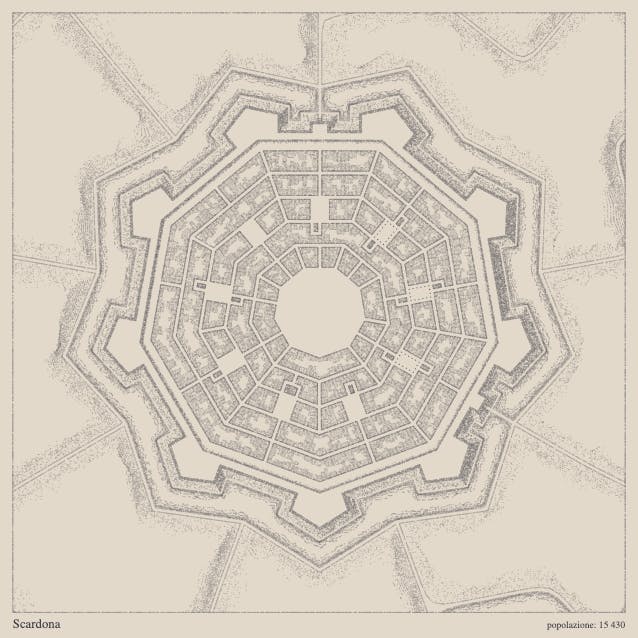- For a high quality version to print, please see instructions in the Project Description.
What is a utopia? By definition, a perfect place that does not existperfect place that does not exist. As such, imagining a utopian space always starts with planning the desirable. The design of utopian spaces both preempts and formats that desirability for the people who will inhabit them. In reborn, generative artist Jacek Markusiewicz invites us to mint and occupy our own utopia while pondering a question: what’s at stake in these intentions?

reborn #25
In 1535, Rabelais published his idea of utopia, in a literary work that has since become an intellectual beacon: the Abbey of Thélème. Again, it starts with a plan. Its inhabitants revel in a space that suggests their social lives will be perfect, harmonious, and devoid of violence. Then in 1840, Professor Charles Lenormant produced his take on Thélème (seen below) in another shot at perfection.

Abbey de Thélème, Charles Lenormant (1840)
Jacek's reborn pushes this exploration even further: his plans are not that of elite castles but entire cities. Perfect political entities, absolute units forming an impossible mesh in an imperfect world.

reborn #69
Alas, we are quickly reminded that such representations are double-edged. This perfect city is also an ideal prison. Its walls and moats protect you from the outside and prevent your escape. Put on your Foucaldian lenses and what you see is a pitiless panopticon — a society that may easily crumble under its calls to virtue. Such calls apply to all, are enforced by all, and yet do not yield a speck of freedom to anyone.

reborn #6
reborn is fertile because it forces us to face our hubris. It takes us from our blurred frustration with an imperfect world and, through its perfect plans, puts us in front of our contradictions. It makes us realize we can have a plan for an ideal world — and absolutely no idea what to do with it.